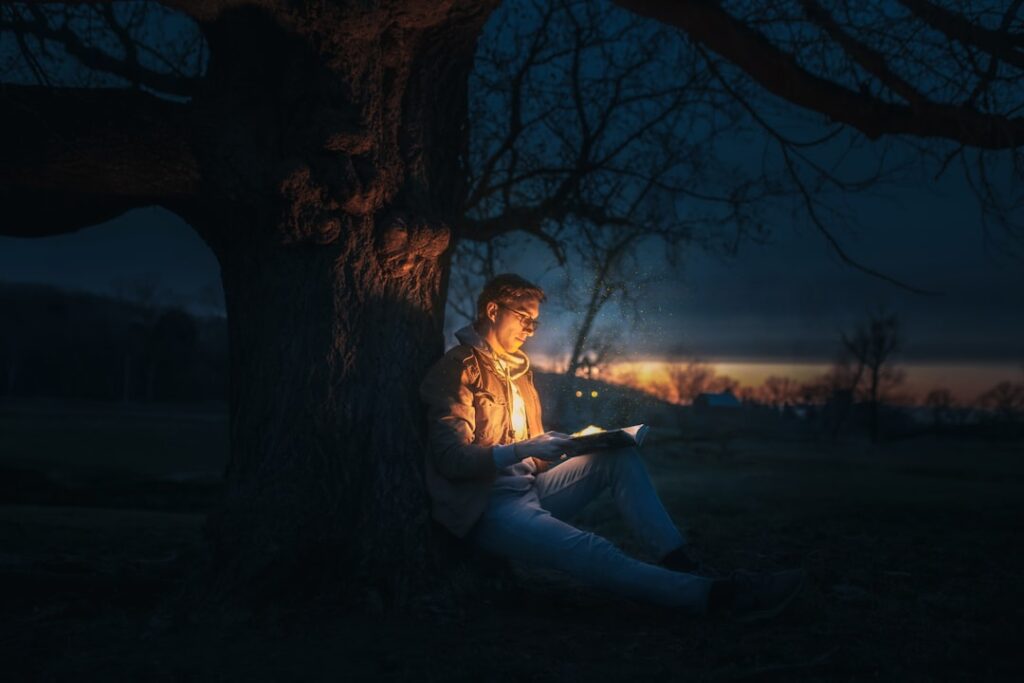1. Introduction
Creativity is often viewed as an innate talent, something that some individuals are born with while others are not. However, the truth is that creativity can be nurtured and developed, especially in children. In fact, creative arts play a vital role in the overall development of children, helping them to express themselves, explore their imagination, and build important cognitive and social skills. From music and dance to visual arts and drama, creative arts provide a platform for children to unleash their creativity and tap into their full potential. This blog explores the vital role of creative arts in child development and highlights the ways in which parents and educators can support and encourage creativity in children.

2. Why is creativity important in child development?
2. Why is creativity important in child development?
Creativity is not just about creating beautiful artwork or composing a catchy melody; it is a fundamental aspect of child development. There are several reasons why fostering creativity in children is crucial for their overall growth and well-being.
Firstly, creativity helps children build important cognitive skills. When engaging in creative activities, such as painting or sculpting, children are encouraged to think critically, solve problems, and make decisions. These skills, in turn, enhance their ability to think outside the box and approach challenges with a fresh perspective.
Secondly, creative arts provide a platform for children to express themselves and explore their emotions. In a world that often values conformity, creative outlets offer children a safe space to freely express their thoughts, feelings, and unique perspectives. This self-expression not only boosts their confidence but also helps them develop a strong sense of identity.
Furthermore, engaging in creative activities promotes the development of fine motor skills and hand-eye coordination. When children are involved in activities like drawing or playing an instrument, they refine their hand movements, gain control over their fine motor skills, and improve their coordination.
Additionally, creative arts foster social skills and collaboration. Whether children are participating in a theater production, a band, or an art class, they learn how to work as a team, communicate effectively, and respect other people’s ideas and perspectives. Through collaboration, children also develop essential skills, such as compromise, negotiation, and empathy.
In conclusion, creativity plays a vital role in child development. From enhancing cognitive skills to promoting self-expression and fostering social abilities, engaging in creative arts provides countless benefits for children. In the next section, we will explore specific ways in which parents and educators can support and encourage creativity in children.

https://unsplash.com/@umityildirim
3. The benefits of incorporating creative arts in education
3. The benefits of incorporating creative arts in education
The importance of creativity in child development extends beyond personal growth and should be integrated into their education. Incorporating creative arts in the curriculum offers a range of benefits that positively impact children’s academic, emotional, and social development.
Firstly, introducing creative arts in education enhances academic performance. Studies have shown that students who are exposed to creative activities excel in critical thinking, problem-solving, and decision-making skills. By integrating creativity into subjects like math and science, children are encouraged to think innovatively, leading to a deeper understanding and retention of knowledge.
Secondly, creative arts nurture emotional intelligence. Education focused solely on academic subjects can neglect the emotional aspect of a child’s development. Engaging in creative activities provides an outlet for emotional expression, allowing children to explore and understand their emotions in a healthy way. This emotional intelligence can improve their mental well-being and contribute to their overall happiness.
Furthermore, incorporating creative arts cultivates empathy and cultural understanding. Through art, music, and theater, children are exposed to a diverse range of perspectives, beliefs, and cultures. This exposure fosters acceptance, tolerance, and respect for others, preparing them to become global citizens.
Additionally, creative arts help develop vital communication skills. Whether it’s through visual arts, writing, or performing, children learn how to effectively express their thoughts and ideas to others. This ability to communicate improves their oral and written language skills, boosts self-confidence, and helps them build strong interpersonal relationships.
In conclusion, the incorporation of creative arts in education has numerous benefits for children’s academic, emotional, and social growth. From enhancing academic performance to developing emotional intelligence and nurturing cultural acceptance, the integration of creative activities in the curriculum is crucial for holistic child development. In the upcoming section, we will explore practical strategies for incorporating creative arts in educational settings. Stay tuned!

4. Nurturing creativity through different art forms
4. Nurturing creativity through different art forms
Now that we understand the benefits of incorporating creative arts in education, let’s delve into the various art forms that can be used to nurture children’s creativity. While visual arts, such as painting and drawing, may be the first to come to mind, there are many other creative outlets that can stimulate a child’s imagination and promote self-expression.
Music, for instance, is a powerful tool for nurturing creativity. From listening and singing to playing instruments, music allows children to explore their emotions, develop their auditory skills, and learn the basics of rhythm and melody. Encouraging children to create their own music or participate in group performances can further enhance their creative abilities.
Another art form that fosters creativity is theater. Through acting, children can step into different roles and explore various perspectives and emotions. Theater not only boosts their confidence and public speaking skills but also encourages imaginative thinking and problem-solving. Collaborative storytelling, improvisation, and scriptwriting are all valuable exercises that can unlock a child’s creativity.
Additionally, writing and storytelling are excellent tools for nurturing creativity. Whether through writing poems, short stories, or even journal entries, children can unleash their imagination and develop their language skills simultaneously. Storytelling sessions or creative writing clubs can provide a platform for children to share their stories and receive feedback, fostering a sense of accomplishment and motivation.
Lastly, integrating digital arts and technology into education can also nurture creativity. From digital drawing and animation to graphic design and coding, technology offers new avenues for artistic expression. Virtual reality and augmented reality can provide immersive experiences that engage children’s senses and enhance their creativity.
By providing opportunities for children to explore and engage in a variety of art forms, educators can facilitate a holistic approach to nurturing creativity. In the next section, we will discuss practical strategies for incorporating these art forms into the classroom. Stay tuned to discover how to unleash the full potential of creative arts in education!

https://unsplash.com/@joshhild
5. Creating a supportive environment for creative expression
5. Creating a supportive environment for creative expression
Now that we have explored various art forms that can nurture children’s creativity, it is crucial to understand the importance of creating a supportive environment for their creative expression. A positive atmosphere is essential for children to feel confident in exploring their imaginative abilities and taking risks with their creative endeavors.
First and foremost, educators should foster an environment that encourages experimentation and celebrates the process rather than just focusing on the final outcome. By emphasizing the value of trial and error, children will learn that mistakes are an integral part of the creative process and can lead to new discoveries.
Furthermore, providing ample time and space for self-expression is essential. Allowing children to freely explore their ideas and take ownership of their creative projects will empower them to unleash their full potential. Teachers can set aside dedicated art corners or creative spaces where children can engage in artistic activities without constraints.
In addition, offering opportunities for collaboration and peer-to-peer feedback can be highly beneficial for nurturing creativity. By working together on group projects, children learn from each other, exchange ideas, and gain new perspectives. Constructive feedback from peers allows children to refine their work and fosters a sense of community, where everyone’s creative contributions are valued.
Moreover, it is essential for teachers to actively listen and provide constructive feedback that encourages children’s growth and development. Positive reinforcement and acknowledgement of children’s efforts will boost their confidence and motivate them to continue exploring their creative abilities.
Finally, incorporating reflection and self-assessment as part of the creative process can help children track their progress and identify areas for improvement. Encouraging children to reflect on their own work empowers them to take ownership of their creative journey and fosters a sense of self-awareness.
By creating a supportive environment that promotes experimentation, collaboration, and self-expression, educators pave the way for children to fully embrace their creativity. In the next section, we will discuss practical strategies to implement these ideas in the classroom. Stay tuned to discover how to unlock the true potential of your students’ creativity!

6. The role of the creative arts in enhancing cognitive skills
6. The role of the creative arts in enhancing cognitive skills
The creative arts not only provide a platform for self-expression but also play a vital role in enhancing a child’s cognitive skills. Cognitive development refers to the processes by which children acquire knowledge, learn to think, reason, and problem-solve. Engaging in creative arts activities can greatly contribute to these cognitive abilities.
One key cognitive skill that is strengthened through creative arts is critical thinking. When children are encouraged to explore different art forms, they are challenged to think outside the box and come up with innovative ideas. This process of problem-solving and finding unique solutions stimulates their critical thinking skills, enabling them to analyze, evaluate, and make informed decisions not only in artistic pursuits but also in various other aspects of their lives.
Another cognitive skill that is developed through the creative arts is communication. Art allows children to express themselves in ways that might be difficult to put into words. By creating and interpreting different art forms, children learn to communicate their thoughts, feelings, and experiences effectively. This ability to communicate non-verbally promotes emotional intelligence and empathy, helping children develop strong interpersonal skills that are crucial in building meaningful relationships.
Furthermore, engaging in creative arts activities can enhance a child’s memory and concentration abilities. Whether it’s learning lines for a play, memorizing a dance routine, or recalling the steps of a painting technique, the creative arts require children to exercise their memory and focus. Regular practice and involvement in artistic activities can improve a child’s ability to retain and recall information, which can have a positive impact on academic performance as well.
Lastly, the creative arts foster problem-solving skills and encourage a growth mindset in children. When faced with challenges or setbacks in their artistic endeavors, children are encouraged to find alternative solutions, persevere, and learn from their mistakes. This mindset of resilience and adaptability is transferable to other areas of their lives, empowering children to approach challenges with determination and confidence.
In conclusion, the creative arts not only provide a platform for self-expression but also influence cognitive development in children. By engaging in artistic activities, children enhance their critical thinking, communication, memory, and problem-solving skills. In the next section, we will explore the impact of the creative arts on emotional and social development, highlighting the immense benefits they have on a child’s overall growth. Stay tuned!

https://unsplash.com/@clever_visuals
7. Encouraging openness and imagination through artistic exploration
7. Encouraging openness and imagination through artistic exploration
The creative arts have a remarkable ability to foster openness and imagination in children. Through artistic exploration, children are encouraged to embrace new ideas, perspectives, and possibilities, enabling them to develop a sense of openness and receptiveness to the world around them.
Artistic activities such as drawing, painting, and sculpting provide an avenue for children to experiment and take risks. They can freely express themselves without fear of judgment or failure. This freedom allows them to tap into their imagination and explore endless possibilities, pushing the boundaries of their creativity.
Moreover, the creative arts encourage children to think beyond what they see. They are encouraged to use their imagination to envision new worlds, characters, and stories. This imaginative thinking not only enhances their artistic pursuits but also stimulates their problem-solving abilities and innovative thinking in all aspects of their lives.
Artistic exploration also cultivates a sense of curiosity and wonder in children. Through the process of creating art, children develop a natural inclination to question, explore, and seek new experiences. This curiosity-driven mindset promotes lifelong learning and encourages children to approach challenges with an open mind and a willingness to learn and grow.
Furthermore, engaging in artistic activities allows children to explore their own unique perspectives and identities. They can express their thoughts, emotions, and experiences through their art, giving them a sense of ownership and agency. This self-exploration and self-expression fosters a deep sense of self-awareness and self-confidence, empowering children to embrace their individuality and develop a strong sense of identity.
In conclusion, the creative arts play a vital role in encouraging openness and imagination in children. By providing a safe space for artistic exploration, children are able to embrace new ideas, think imaginatively, nurture their curiosity, and develop a strong sense of self. In the next section, we will delve into the impact of the creative arts on emotional and social development, highlighting how they nurture empathy, emotional intelligence, and collaborative skills in children.

https://unsplash.com/@xavi_cabrera
8. The importance of collaboration and self-expression in creative arts
8. The importance of collaboration and self-expression in creative arts
The creative arts not only foster individuality and imagination in children but also promote collaboration and self-expression. Engaging in artistic activities encourages children to work together, share ideas, and collaborate on creative projects. Whether it’s a group art project or a theater production, the creative arts provide a platform for children to learn how to work with others, negotiate differences, and collectively bring their ideas to life.
Collaboration in the creative arts teaches children valuable skills such as communication, teamwork, and problem-solving. They learn to listen to others’ perspectives, compromise, and find common ground, all while working towards a shared goal. These collaborative experiences help children develop empathy, respect for others’ opinions, and an appreciation for diverse talents and ideas.
In addition to collaboration, the creative arts also encourage self-expression. Artistic activities enable children to communicate their thoughts, feelings, and experiences in a non-verbal and expressive way. Whether through painting, dancing, or writing, children can find unique ways to share their innermost thoughts and emotions, promoting emotional intelligence and self-awareness.
Furthermore, self-expression through the creative arts empowers children to embrace their individuality and develop a sense of confidence in their abilities. By seeing their ideas and creations valued and appreciated, children develop a positive self-image and a belief in their own capabilities. This confidence extends beyond the realm of the creative arts and has a positive impact on their overall personal and academic growth.
In conclusion, collaboration and self-expression are integral aspects of the creative arts. By engaging in collaborative artistic projects, children learn valuable skills for working with others, while self-expression promotes emotional intelligence and self-confidence. In the next section, we will explore how the creative arts contribute to cognitive development, highlighting their role in critical thinking, problem-solving, and academic achievement.

https://unsplash.com/@chrismburgett
9. Fostering confidence and resilience through creative experiences
9. Fostering confidence and resilience through creative experiences
Creative arts play a significant role in fostering confidence and resilience in children. When engaging in artistic activities, children are given the freedom to explore their imagination and take risks. Whether it’s experimenting with new artistic techniques or presenting their creations in front of an audience, these experiences build resilience by challenging children to step out of their comfort zones and overcome obstacles.
Through the creative arts, children are encouraged to embrace their unique ideas and perspectives. They are empowered to trust their artistic choices and have confidence in their abilities. This belief in oneself extends beyond the artistic realm and teaches children that their ideas and contributions are valuable, leading to increased self-esteem and self-confidence.
Moreover, the creative arts provide a safe space for children to make mistakes and learn from them. In the process of creating art, children often face challenges and setbacks. However, they learn to adapt, problem-solve, and persevere through these obstacles. This resilience gained from artistic experiences strengthens their ability to face challenges in other areas of life, instilling in them a sense of determination and perseverance.
Creative arts also offer opportunities for children to receive feedback and constructive criticism. This feedback allows them to see areas where they can improve and grow, shaping them into resilient individuals who are open to learning and adapting.
By fostering confidence and resilience, the creative arts empower children to believe in themselves and their abilities. They develop a sense of identity, allowing them to navigate the world with assertiveness and adaptability. In the upcoming section, we will delve into the cognitive benefits of creative arts and how they contribute to a child’s intellectual growth.

https://unsplash.com/@thoughtcatalog
10. Conclusion: Embracing the power of creative arts for holistic child development
10. Conclusion: Embracing the power of creative arts for holistic child development
In conclusion, the role of creative arts in child development cannot be overstated. Through artistic experiences, children develop confidence, resilience, and a sense of identity that extend beyond the realm of art itself. The freedom to explore and express their unique ideas and perspectives allows them to trust their abilities, leading to increased self-esteem and self-confidence.
Engaging in the creative arts also provides children with valuable lessons in adaptability and problem-solving. Artistic challenges and setbacks teach them to persevere and find innovative solutions, skills that are transferable to other areas of their lives. The feedback and constructive criticism they receive help them grow and evolve, instilling in them a lifelong commitment to learning and personal development.
By embracing the power of creative arts, parents, educators, and policymakers can create an environment that nurtures the holistic development of children. From cognitive benefits to emotional well-being, the creative arts offer endless opportunities for children to explore and flourish. Let us continue to support and encourage artistic expression in our children, as they shape a brighter and more innovative future.
